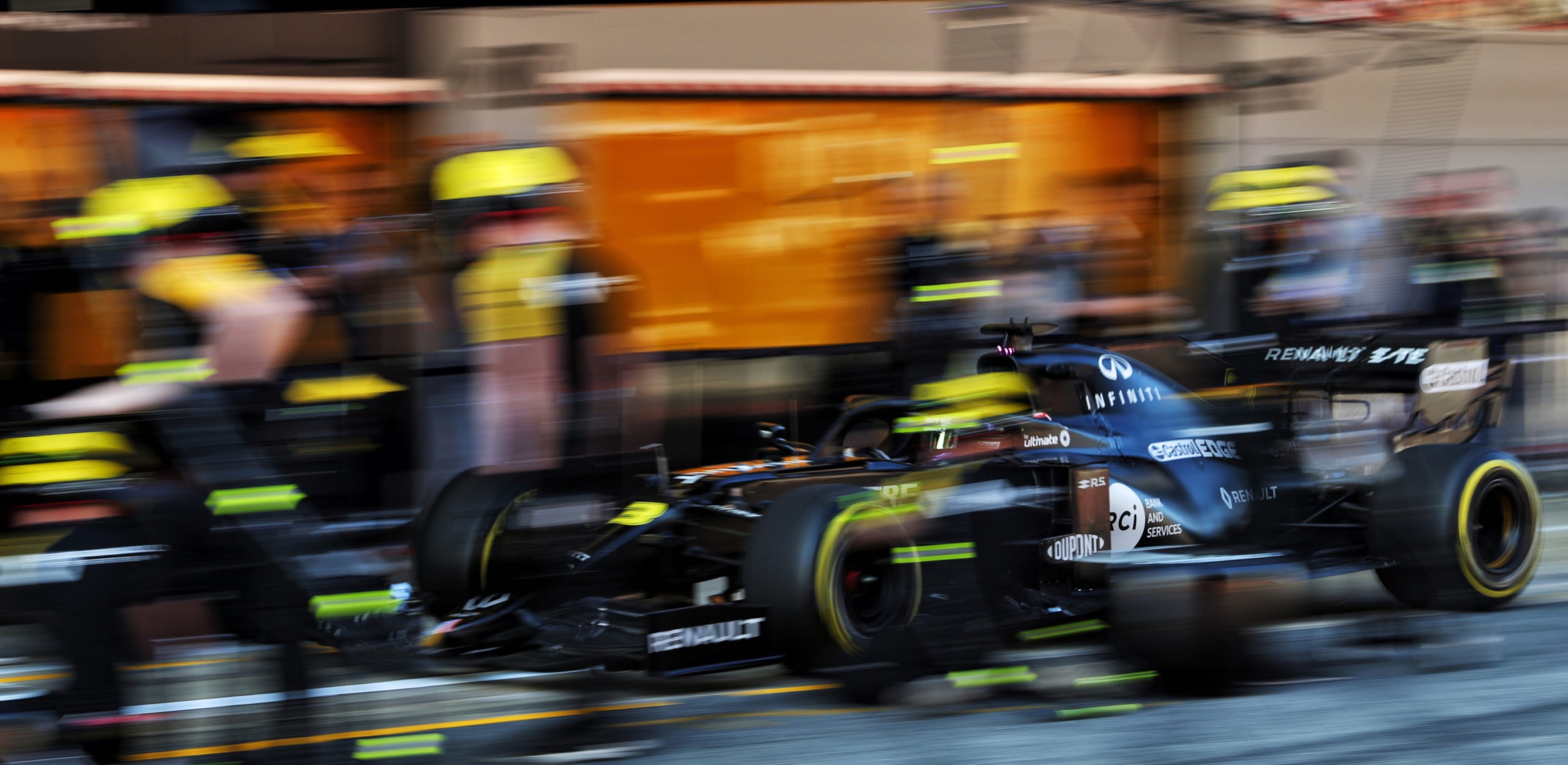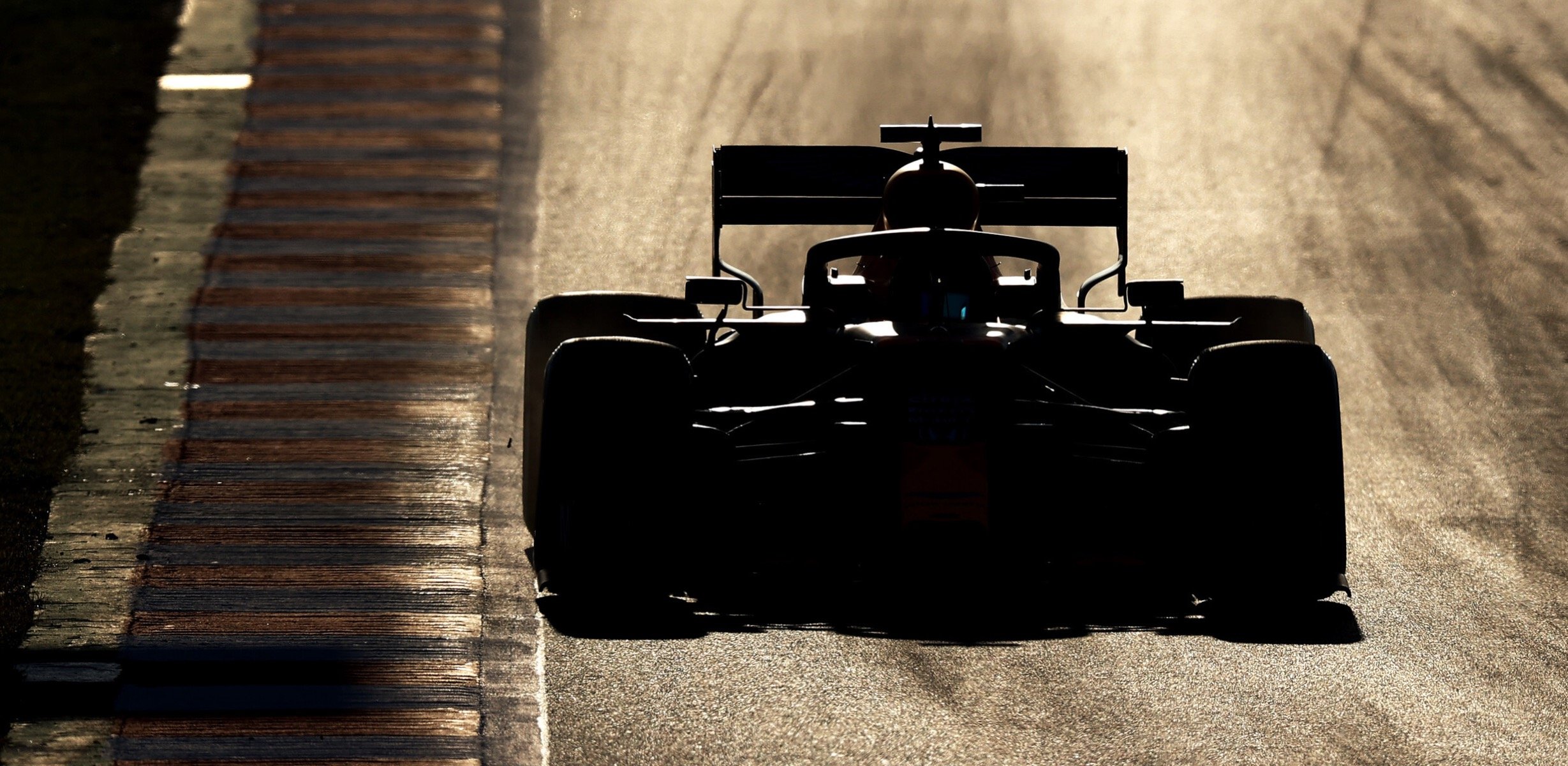
With the 2020 season starting in just 21 days, Formula 1 teams wrapped up their first of two rounds of three-day preseason testing at the Circuit de Barcelona-Catalunya. Led by the dominant Mercedes-AMG Silver Arrows, F1 World Champions for the last six years, fans and pundits alike wondered how the remaining teams had used the offseason to close the gap to the Teutonic titans.
Racing under unaltered FIA rules from last season, it was believed that every team would arrive having buried any nagging performance problems over the winter. That would be an understatement – the first test was a statement of mechanical parity. Not one team exhibited any mechanical frailty during the astounding total of 3,940 laps over the three days.
Subtracting a few spins and Kevin Magnussen’s crash in the Haas, due to a puncture, the 2020 season should be ultra competitive in the midfield, thanks to astounding reliability.
That’s not to say a few teams forgot to bring surprises. Thanks to the Mercedes W11, Red Bull RB16 and Racing Point RP20, the first days of the 2020 F1 preseason hinted that some rearrangement of the grid lineup was possible when the teams line up for the Australian Grand Prix, at Albert Park on March 15.
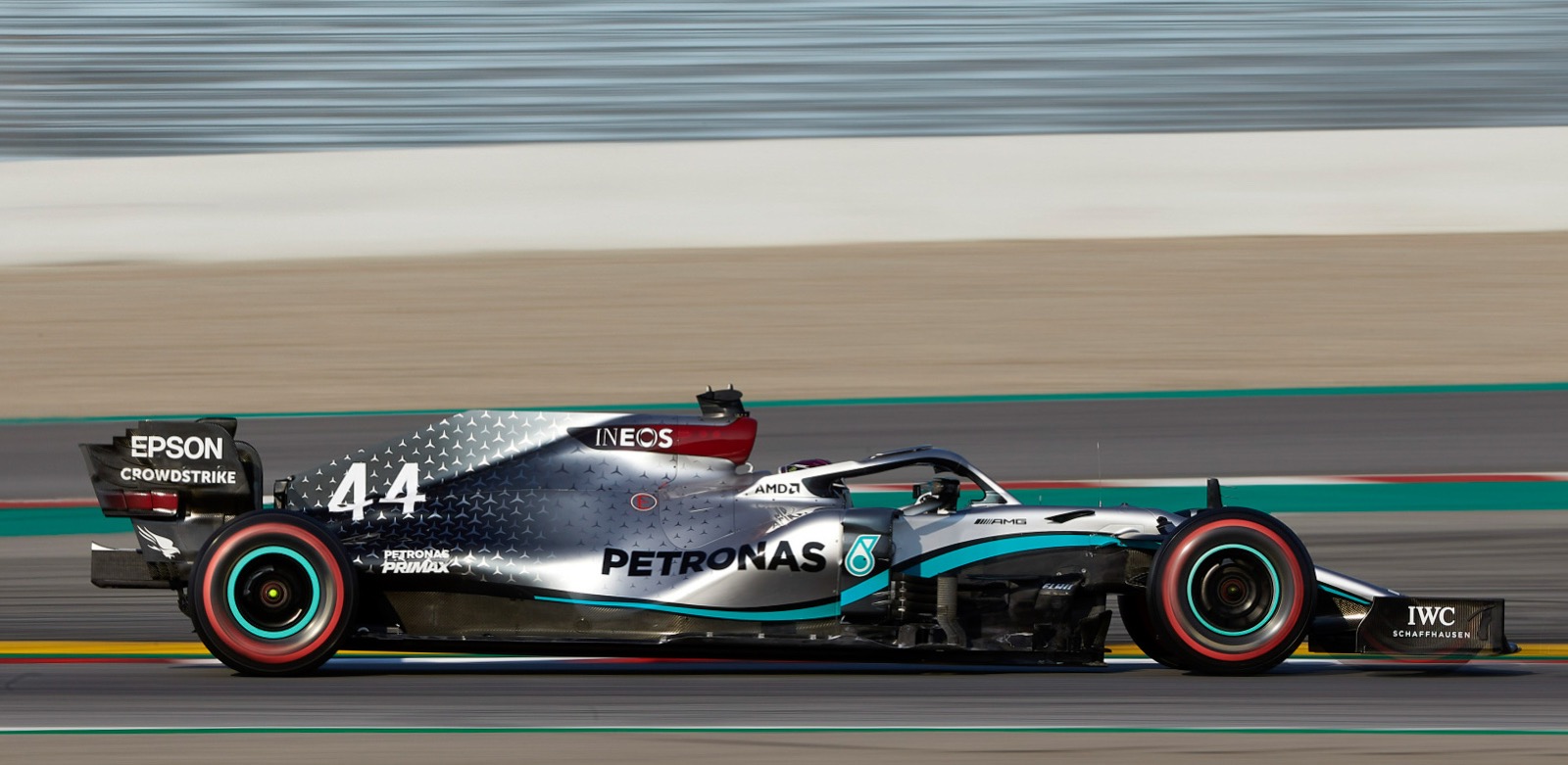
Instead of Mercedes keeping its traditional low-key approach to pre-testing, Valtteri Bottas quickly got down to a lap of 1m 15.406s, with a certainty that both he and Lewis Hamilton would be well under the Spanish Grand Prix pole time set last year during the second 2020 preseason test.
Further, the German squad stunned the paddock by revealing and testing an utterly novel steering design. Called DAS, Mercedes’ Dual-Axis Steering system caught every team napping. While it won’t be allowed by 2021 rules, it will enable the Silver Arrows’ toe angle of the front wheels to be adjusted by pushing and pulling on the steering wheel this season. The result is less front tyre wear
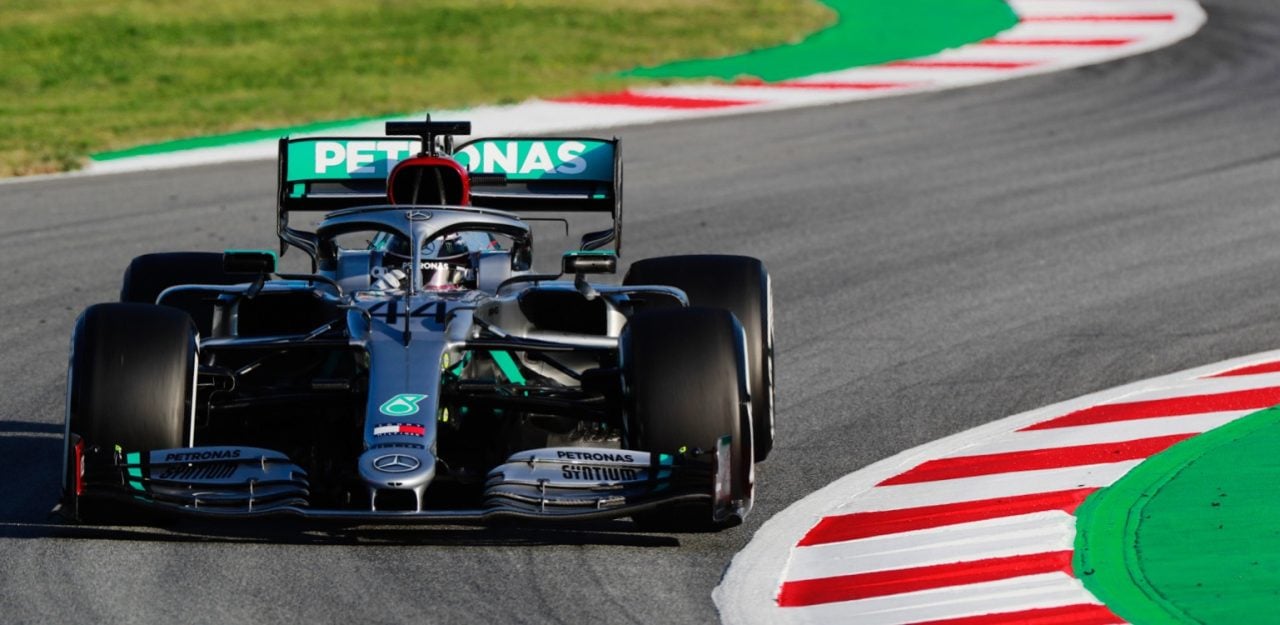
Bottas pointed out that the new W11 still needed plenty of tuning to bring out its best performance, but a series of sizzling short and long-run test laps by both Hamilton and Bottas announced to the other teams that they have been warned.
Mercedes logged a total just 116 laps less than what they completed during 2019’s first preseason test when they had an extra day.
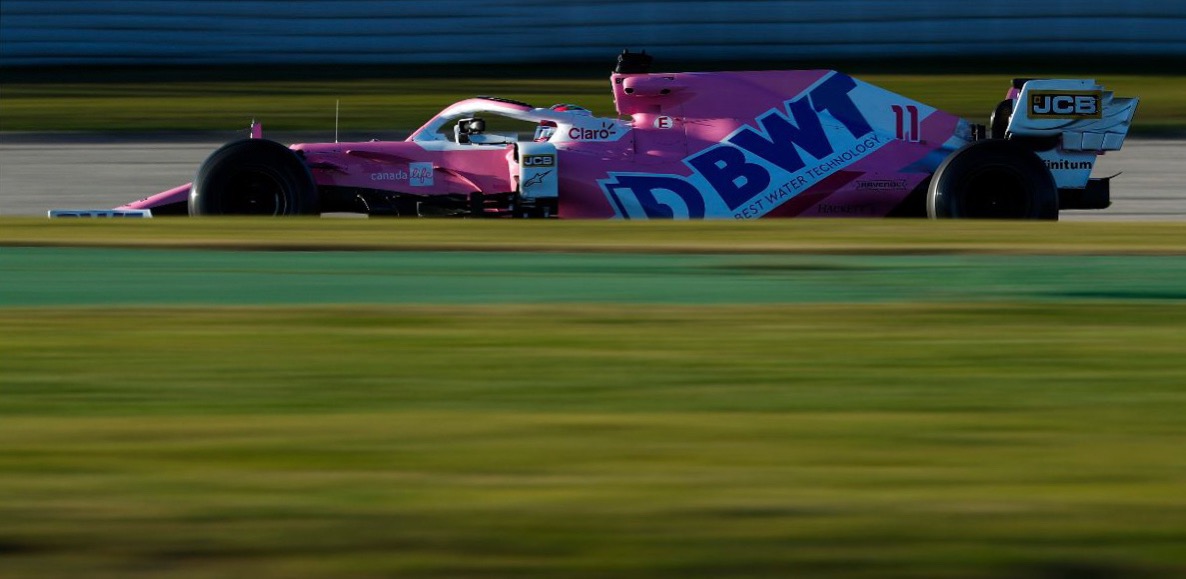
Certainly vying for the top surprise of the 2020 preseason so far was the new Racing Point RP20. As the press casually gathered around the unveiling, the team revealed a striking ‘pink clone’ of last year’s championship-winning Mercedes W10.
While the new nose design is nearly identical to that of the 2019 Silver Arrow, and its general proportions are quite Mercedes-like, there are fewer similarities from the side pods back to the rear wing.
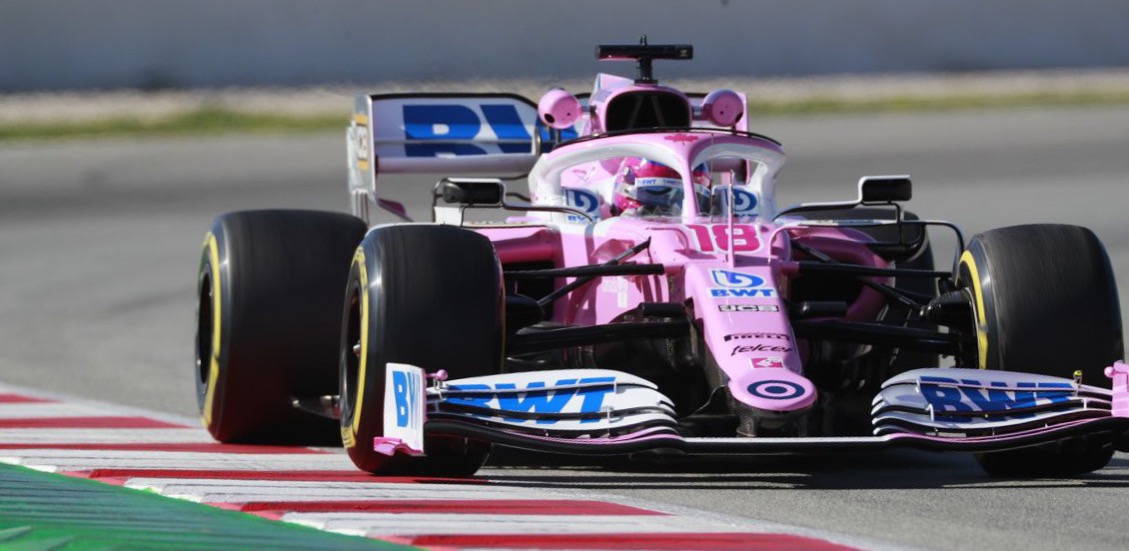
However, with the new RP20 already using Mercedes’ 2020 power unit, 2019 gearbox and low rake angle outboard suspension components, Racing Point chose to adopt a slim nose and ‘cape’ to accelerate the airflow towards the leading edge of the floor, thus matching Mercedes’ proven low-rake-angle aerodynamic philosophy.
The ‘pink Mercedes’ has proved ‘Mercedes quick’ too, particularly after Sergio Perez hustled within less than 0.1s of the Silver Arrows at the top of the timesheets on the first day.
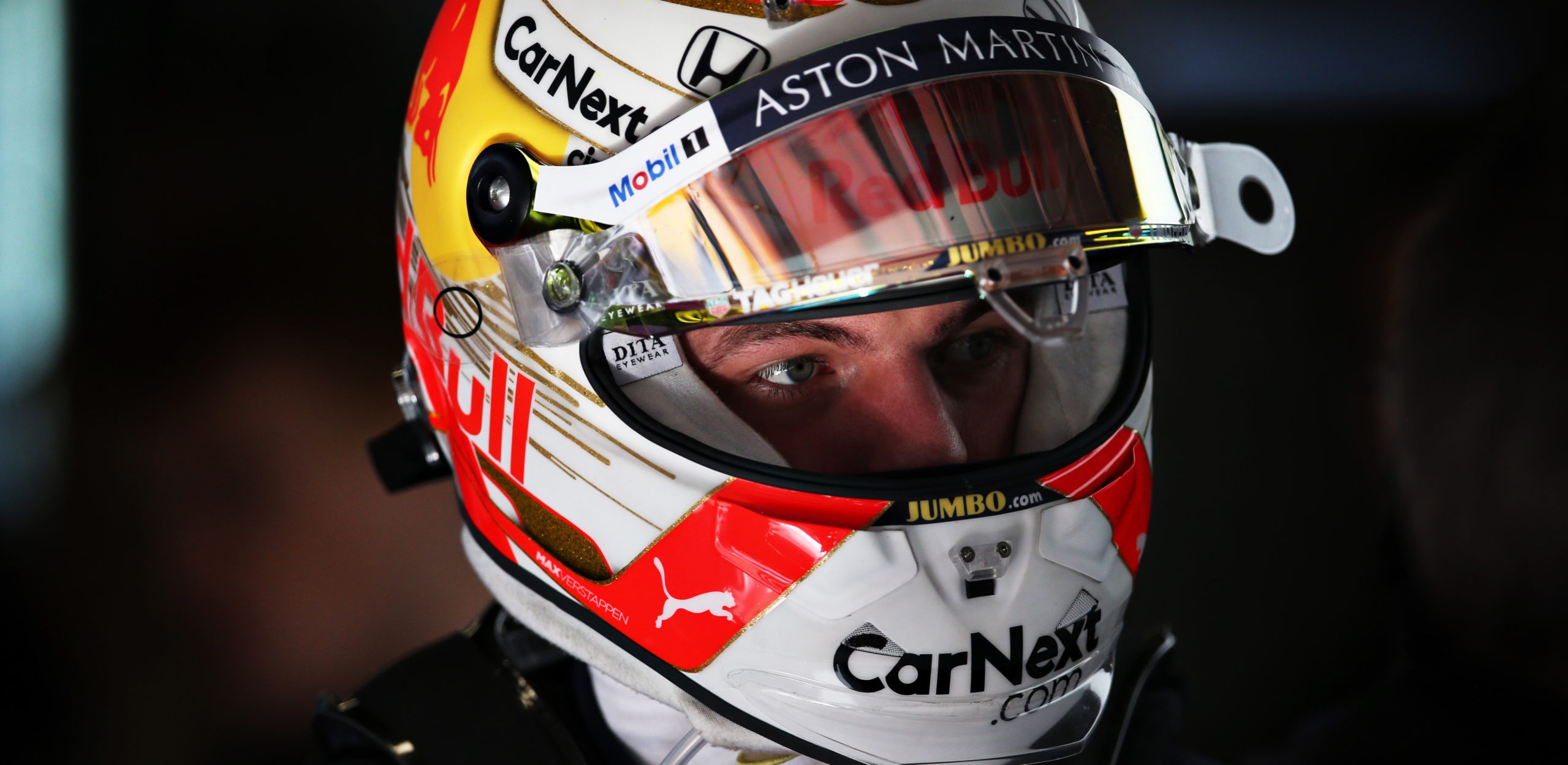
Red Bull’s Honda-powered RB16 seems to have eluded its recent form of arriving with development bodywork and fragile mechanicals. At Barcelona last week, it was apparent that Red Bull believes they are ready to vie for the best of the rest.
The RB16 is exceptionally agile and flowing through the medium-high speed sequences, notably between Turns 2-3. Champion-in-waiting Max Verstappen and teammate Alex Albon could change direction with ease.
Challenging Mercedes’ DAS, the RB16 features an equally brilliant front suspension concept, with a double bulkhead separating the hydraulic brake and clutch reservoirs from a multi-link arrangement on the lower wishbones.
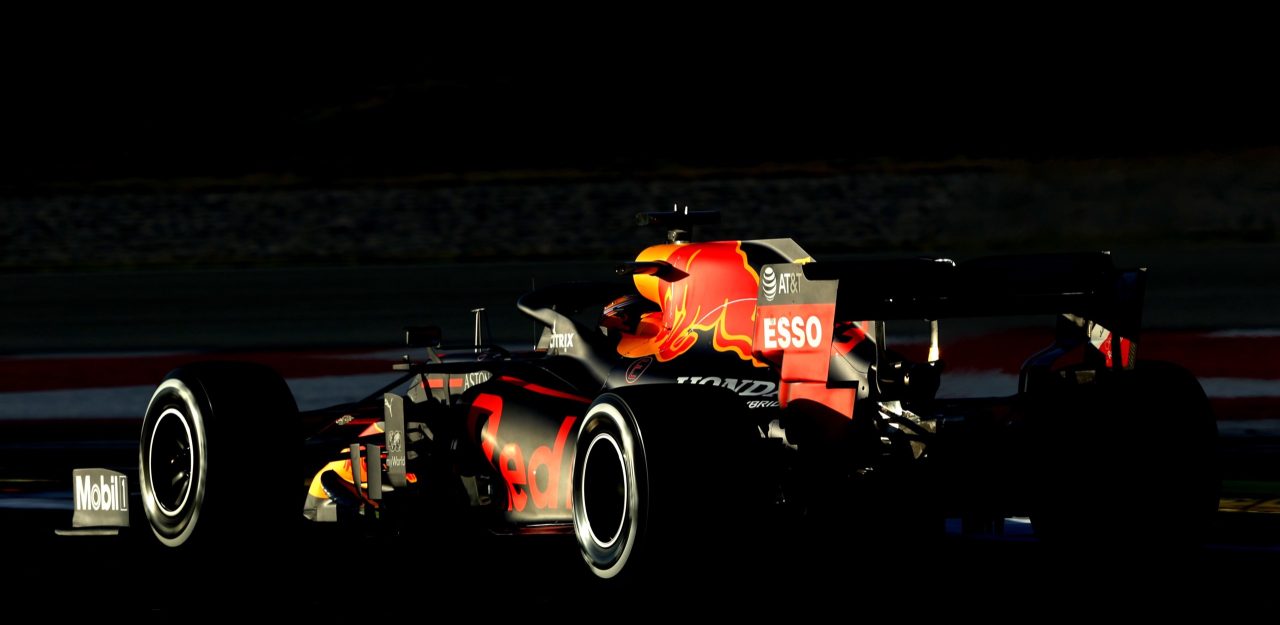
Verstappen and Albon put together 471 laps, just 23 short of Mercedes’ field-leading total. Yet, they only managed the ninth-fastest time of the week because ultimate speed wasn’t the point of the exercise, according to Verstappen.
“I think for us, the most important for this week was all about just doing a lot of laps”, said the Dutchman… and doing a lot of tests on the car.”
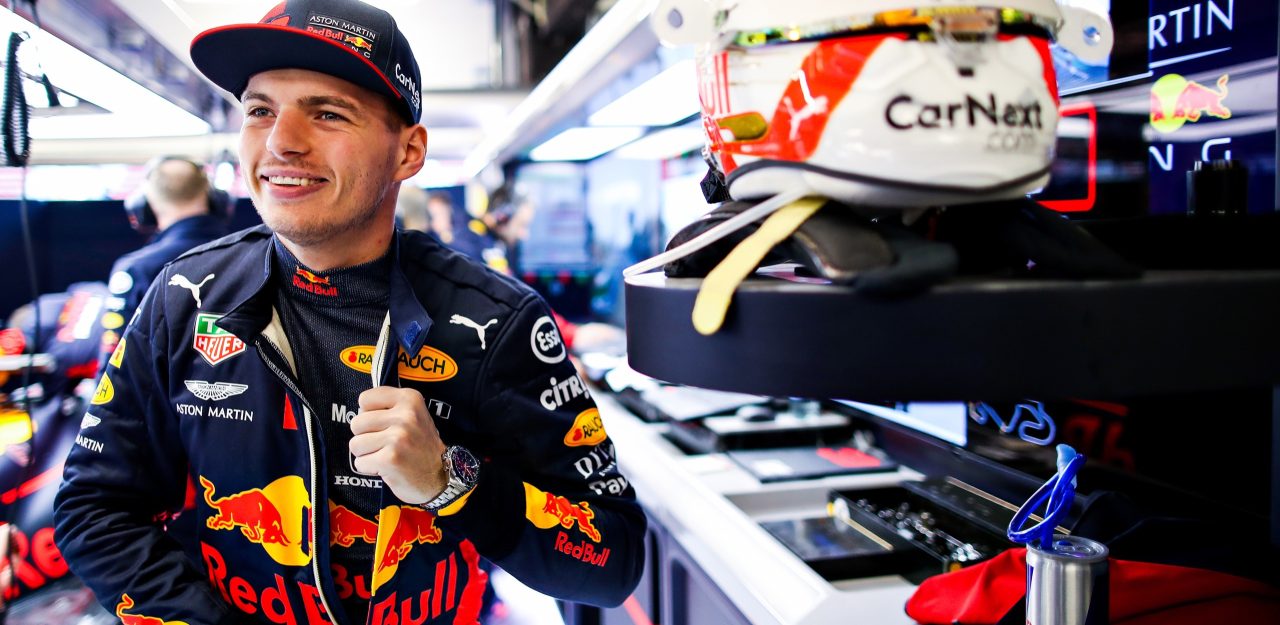
Another reason for holding back on speed is that Red Bull should take another step during the second week in Barcelona, with Albon confirming that Red Bull will upgrade the RB16 closer to its Australian Grand Prix spec.
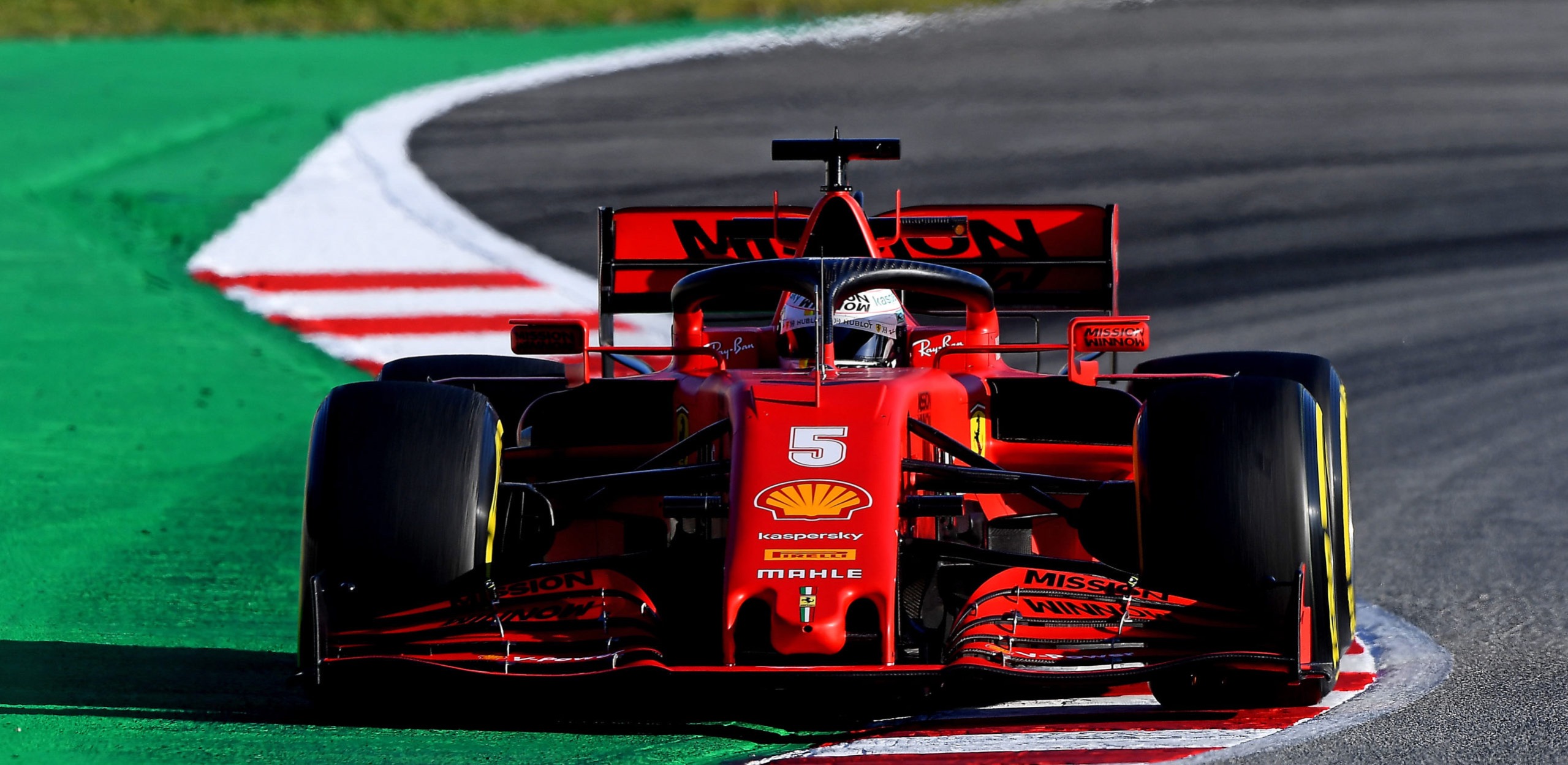
A look at the timesheets found Ferrari’s Charles Leclerc 11th at the end of the first day. Rather than panic, Leclerc was pleased. Why? Because in 2019 preseason testing, Ferrari was the instant front runner in Barcelona as Mercedes seemed to falter. Two weeks later the Silver Arrows arrived in Melbourne with virtually a different car. From there, Mercedes went on an eight consecutive race-winning romp. Ferrari never recovered.
“This season, we have changed our approach quite a lot,” offered Leclerc. “We decided to focus a bit more on ourselves, trying to learn the car as much as possible in these first few days, and then focus on performance a bit later on. We’ll see if that pays off.”
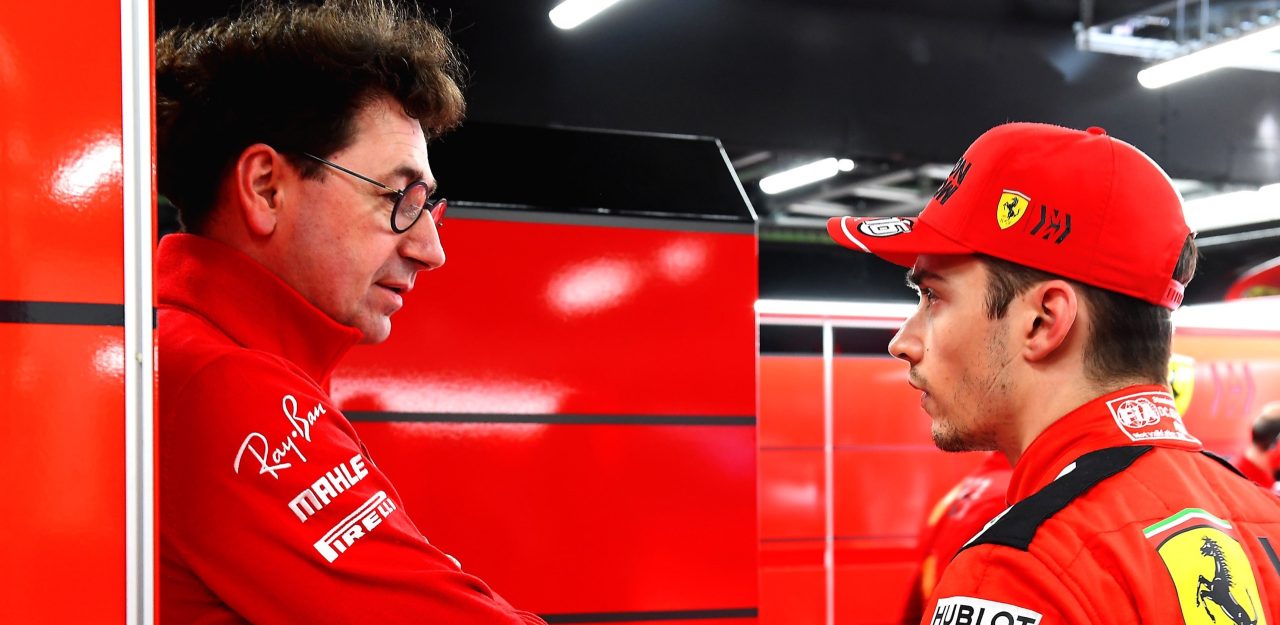
As the 2020 rules have remained the same, Ferrari could well afford to “keep its powder dry”, not showing its hand too early. Instead, the Scuderia took pains to gather a tremendous amount of mapping data without risking the car.
Ferrari quickly pressed Leclerc into shaking down the SF1000 on the first day in Spain, after Sebastian Vettel, previously scheduled had to bow out due to illness.
Leclerc’s impressions of the car were consistent with Ferrari’s low-key approach to the first test week.
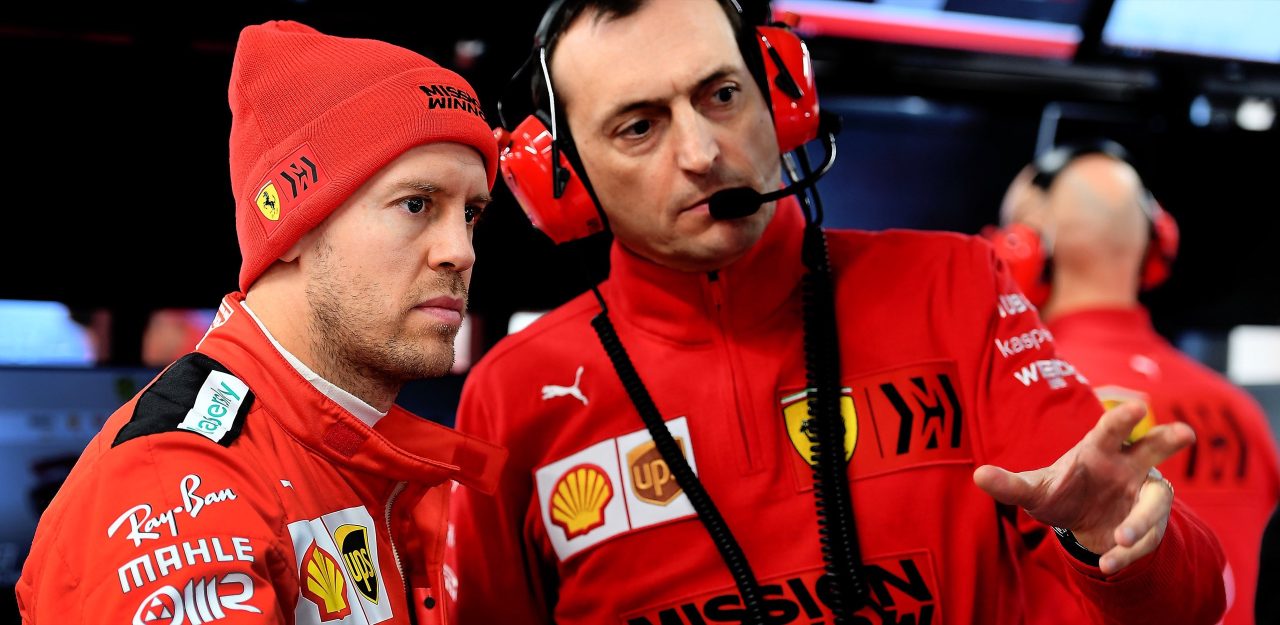
“It was a first day without problems, which is always very important,” stated Leclerc. “We did quite a lot of laps. We did all the tests we wanted on the car, some very positive, so all in all a positive day.”
And what about being a 2020 drivers’ championship contender?
“The only goal I want to achieve this year is that when 2020 is finished, I look back at my year and I don’t see any missed opportunities,” offered Leclerc.
“When I look back at 2019, there’s were a few [missed opportunities] by myself and overall as a team, and at the end of 2020 I want this to be a lot less than in 2019, so this will be the primary goal.”
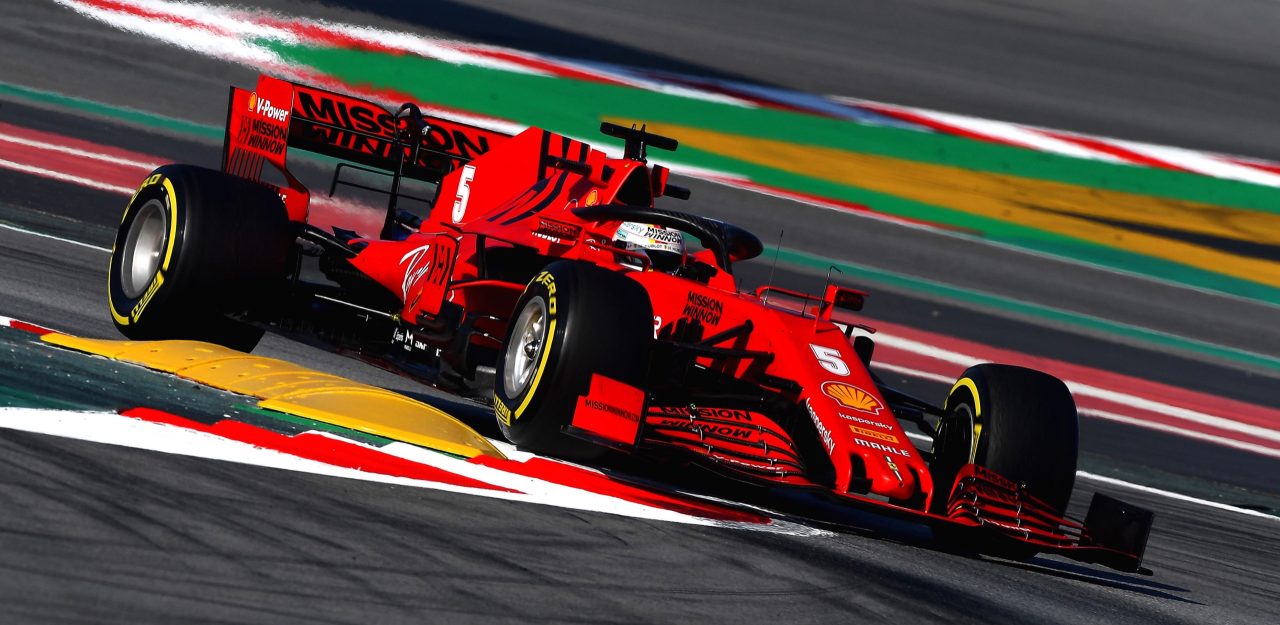
Leclerc was back in the Ferrari SF1000 for the morning of Day 2, with a recovered Vettel set to drive the car in the afternoon.
At the end of the first week, Ferrari was still on the script. Despite Vettel experiencing a power failure on Day 3, the team remained focused on understanding the fundamentals of the new car so that the trivial mistakes that doomed their 2019 title hopes were a thing of the past.
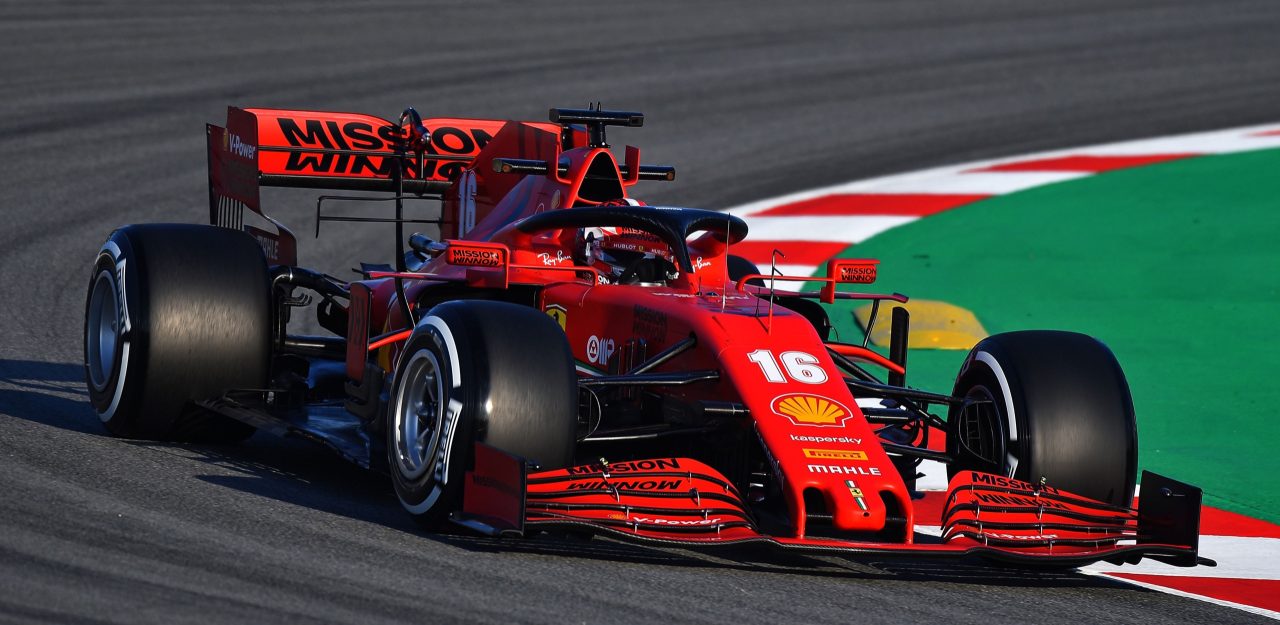
With the basic 2020 programme in place, the SF1000 has improved pace through low-speed corners, which points to added downforce. But the team chose to run their engine at much lower levels keeping the car surprisingly slow on the straights. Was it due to the cornering speed mods or to keep the SF1000’s high-speed potential under wraps?
The Scuderia should turn up the wick in the second preseason test. Still, expect the team to hold the SF1000 back until the final test laps on Friday before delivering its more accurate overall pace for the Albert Park track.
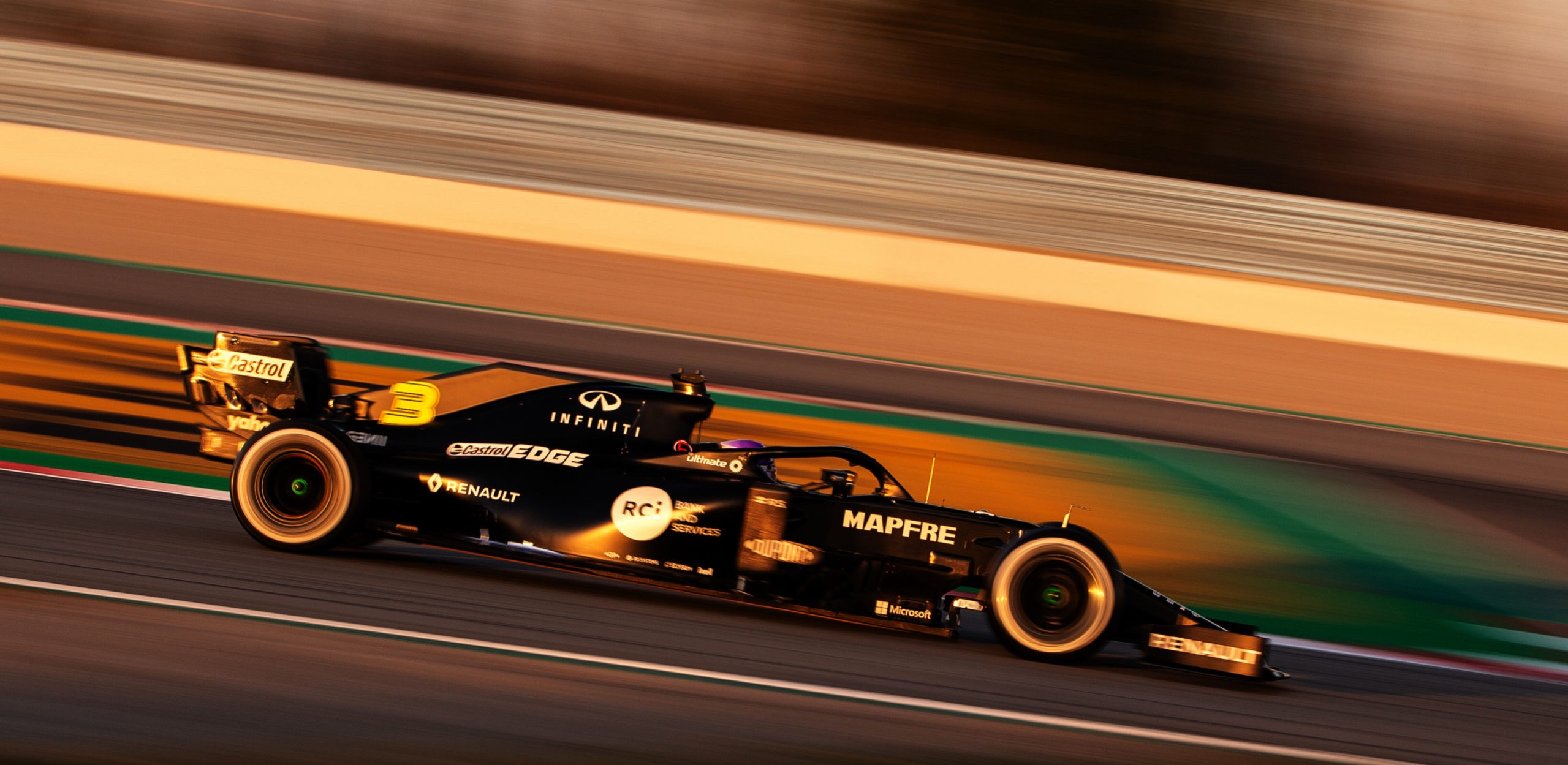
The French squad was all about being “a mystery wrapped in an enigma” before the first test week: no pictures, no leaks, no rumours. Further, the car revealed at their launch event wasn’t the same car that pulled out of the garage on the first day of preseason testing still swathed in an all-black testing livery.
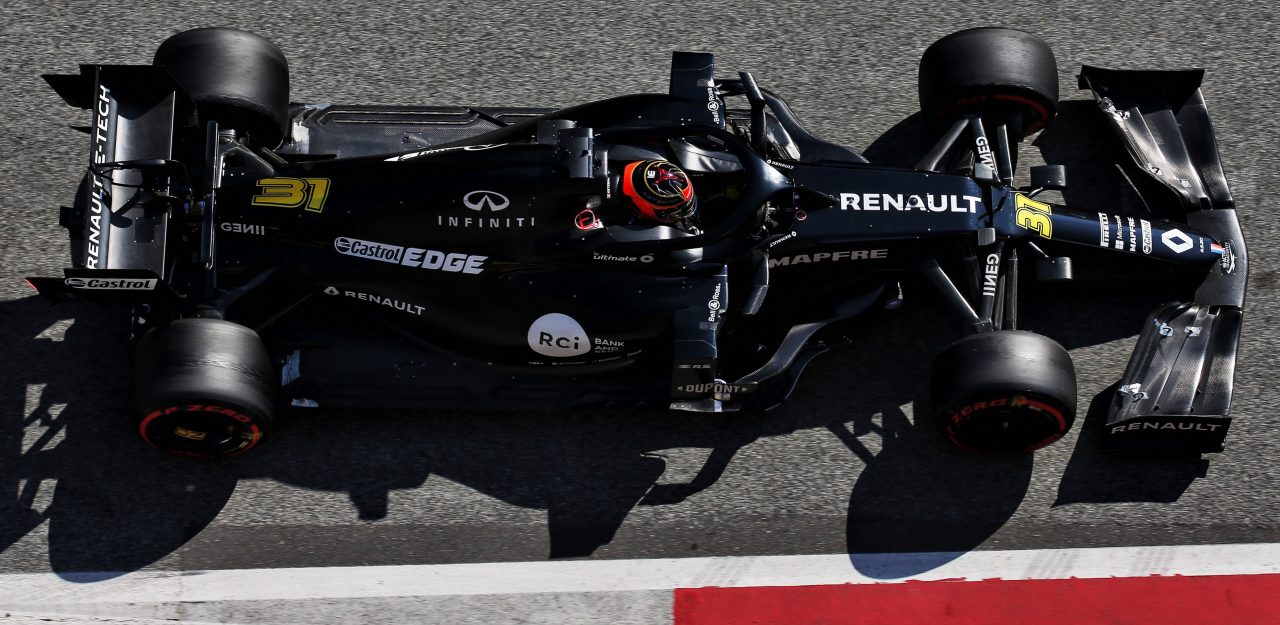
Even then, the R.S.20 remained in the garage more than at speed. However, when Renault eventually committed to flat-out runs, the R.S.20 reeled off an impressive 169 laps and even had the opportunity to try the softer compounds. Both Daniel Riccardo and Esteban Ocon drivers spoke of proper balance.
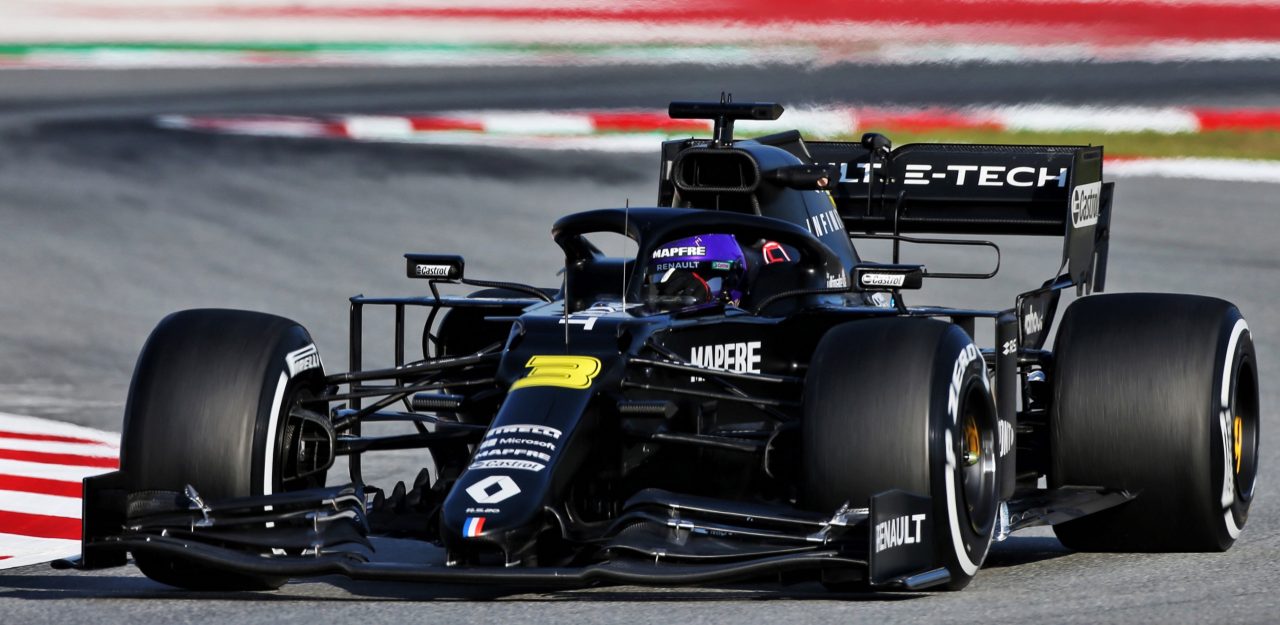
Best of all, Daniel Riccardo promptly pumped in the second fasted lap of the week.
In the end, Renault seems to have the tools to push hard to reclaim the 54 points lost to engine customer McLaren in 2019. That deficit dropped the French team to fifth in the constructors’ standings behind the rejuvenated British squad.
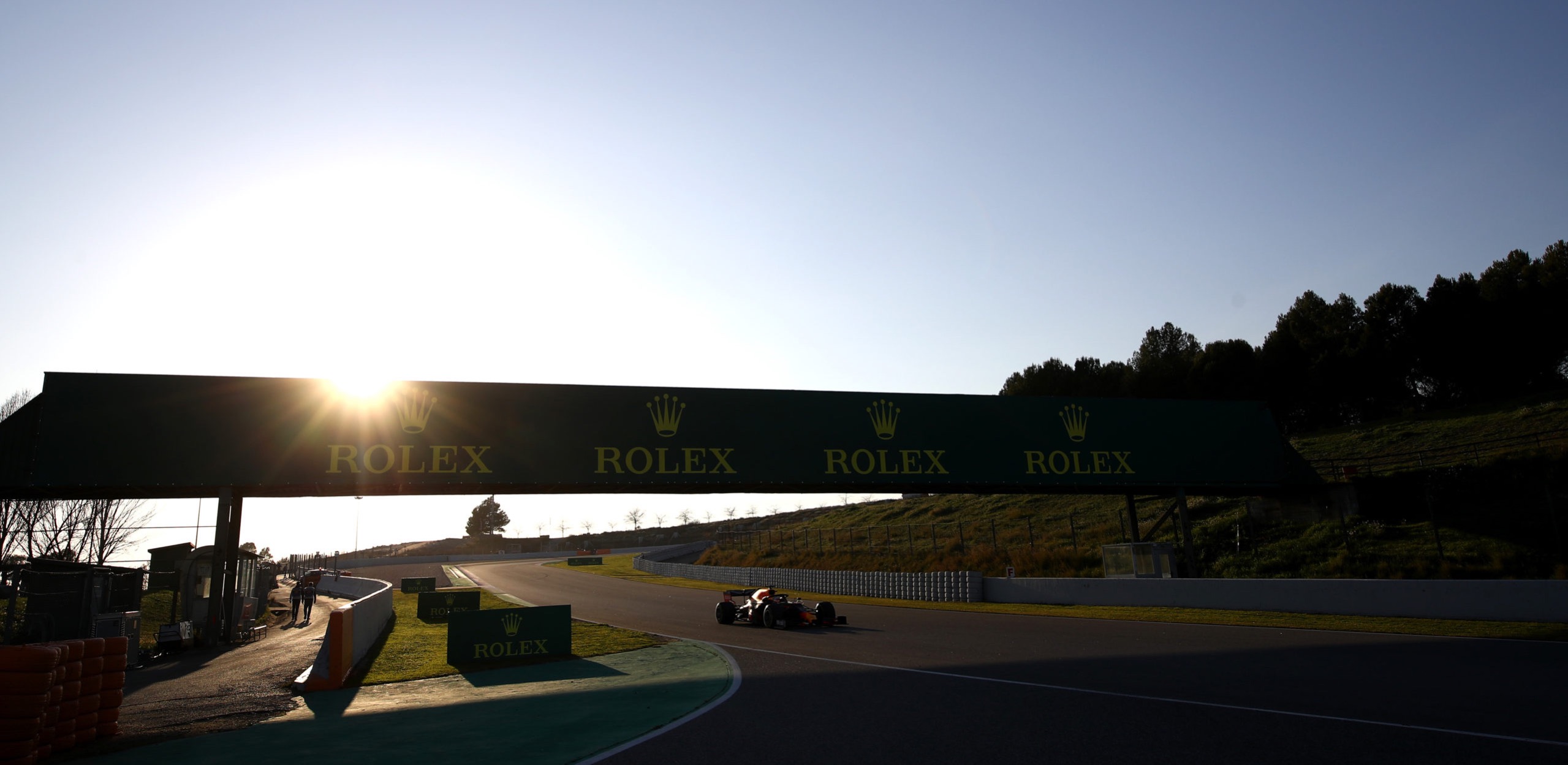
After a quiet start on the second day of pre-season testing, Kimi Raikkonen buckled up for a late run of more than 130 laps that put his Alfa Romeo C39 to the top of the charts with the fastest lap of 1m17.091s.
It appears that Alfa will focus primarily on high speed for 2020. Data gathered after the team’s 424 testing laps shows Alfa Romeo with an impressive 0.16s quicker pace on long straights than Mercedes.
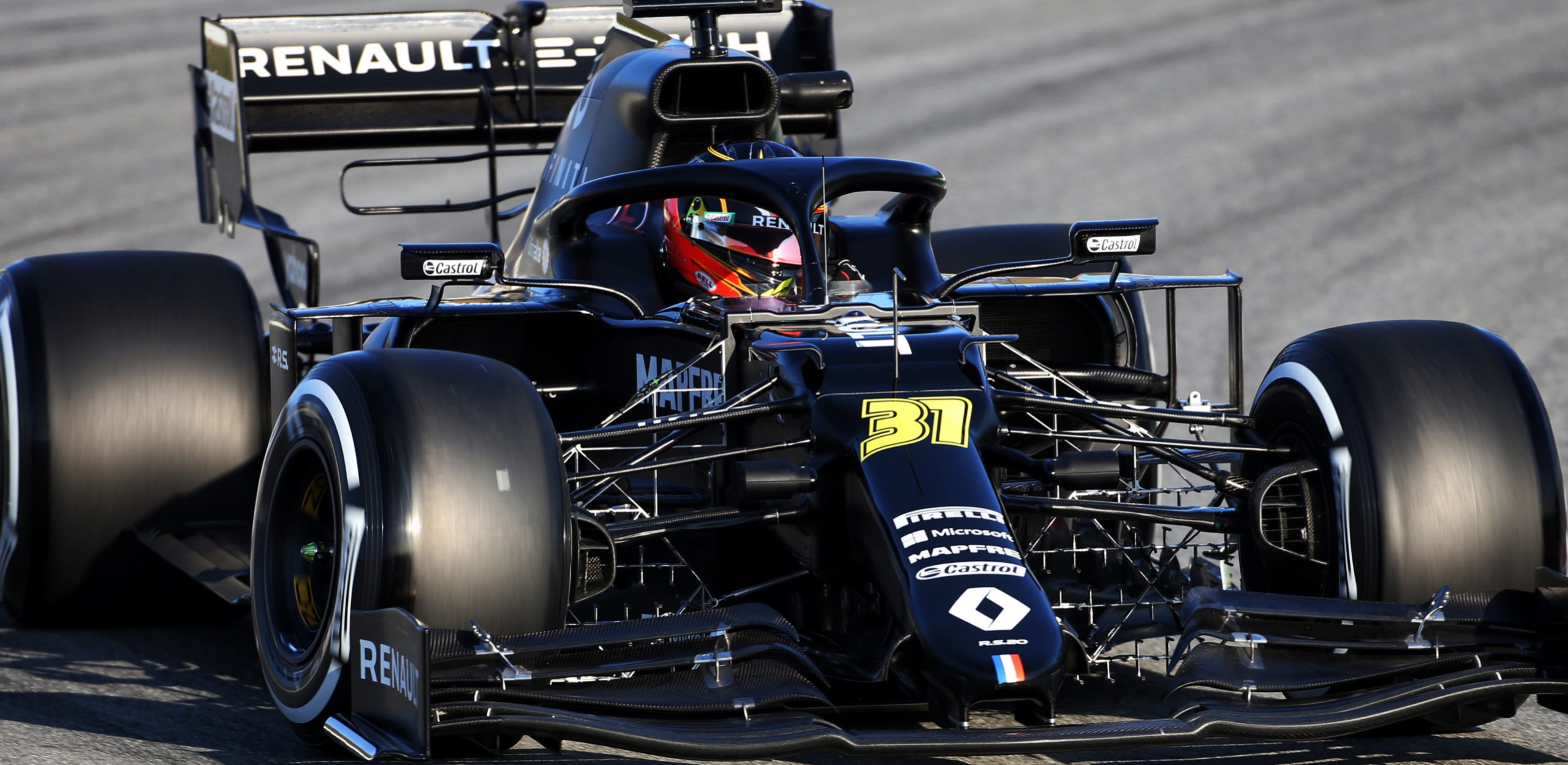
The first test week is mainly about mileage and seeing how the car works. Yet, Carlos Sainz’s couldn’t contain his optimism after his MCL35 finished the first day of pre-season testing with 161 laps under his belt, 0.866s behind leader Lewis Hamilton – a significant increase in pace from last season. The team finished the week with 423 laps, the fourth-largest total.
However, asked if his McLaren had leapt ahead of their rivals in 2020, Sainz admitted, just as with last season, his McLaren team would remain wheel-to-wheel with rivals Renault, Haas, Alfa Romeo and the newly rebadged AlphaTauri squad.
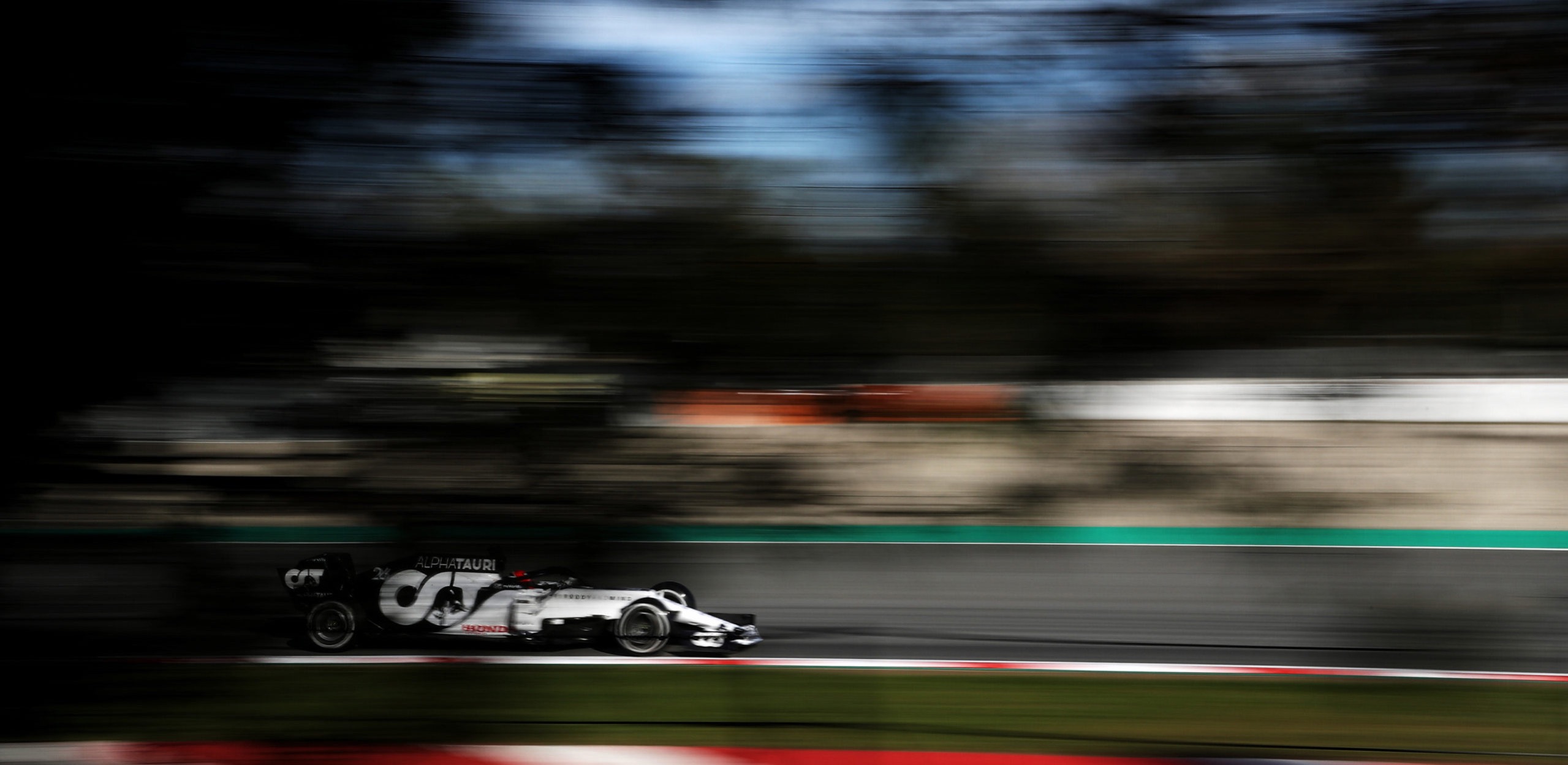
Red Bull owner Dietrich Mateschitz decided to drop his second team’s Toro Rosso brand after 2019, which he had used ever since purchasing Minardi ahead of the 2006 season. In 2020, the team will promote his AlphaTauri fashion line founded four years ago.
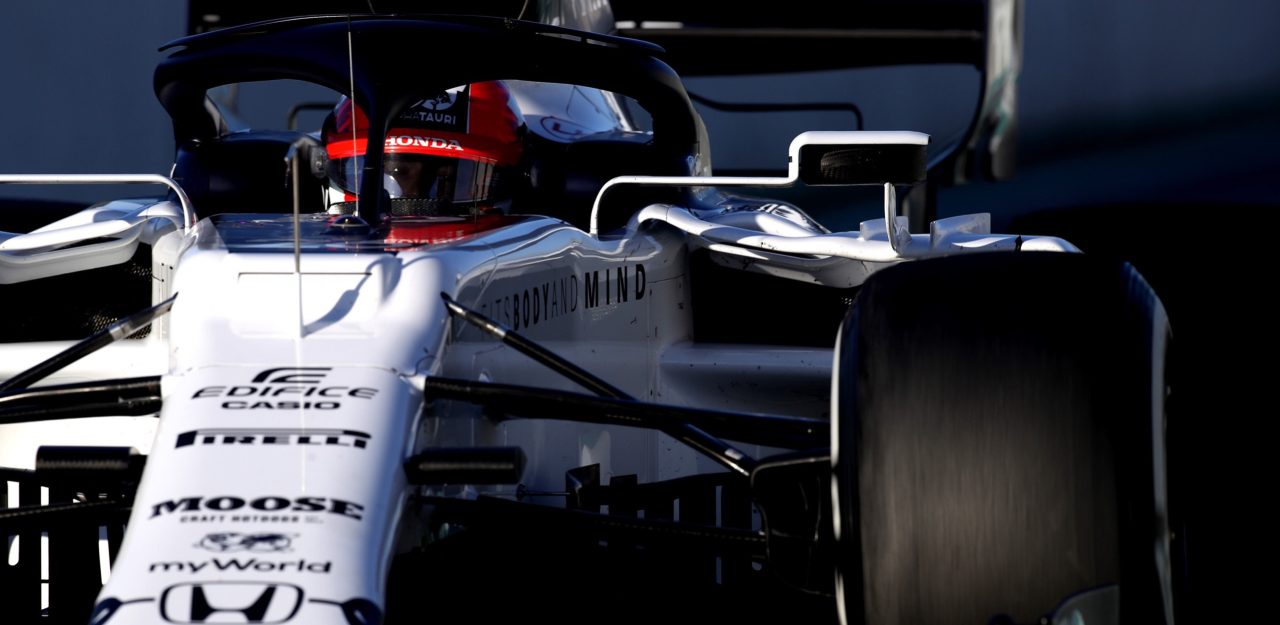
Remaining with Honda power, the new AlphaTauri follows its best season in F1, having scored 85 points and securing sixth in the standings.
Early testing hints the newly branded team, using their revised Honda power unit, will follow Alpha Romeo’s high straight-line speed performance path.
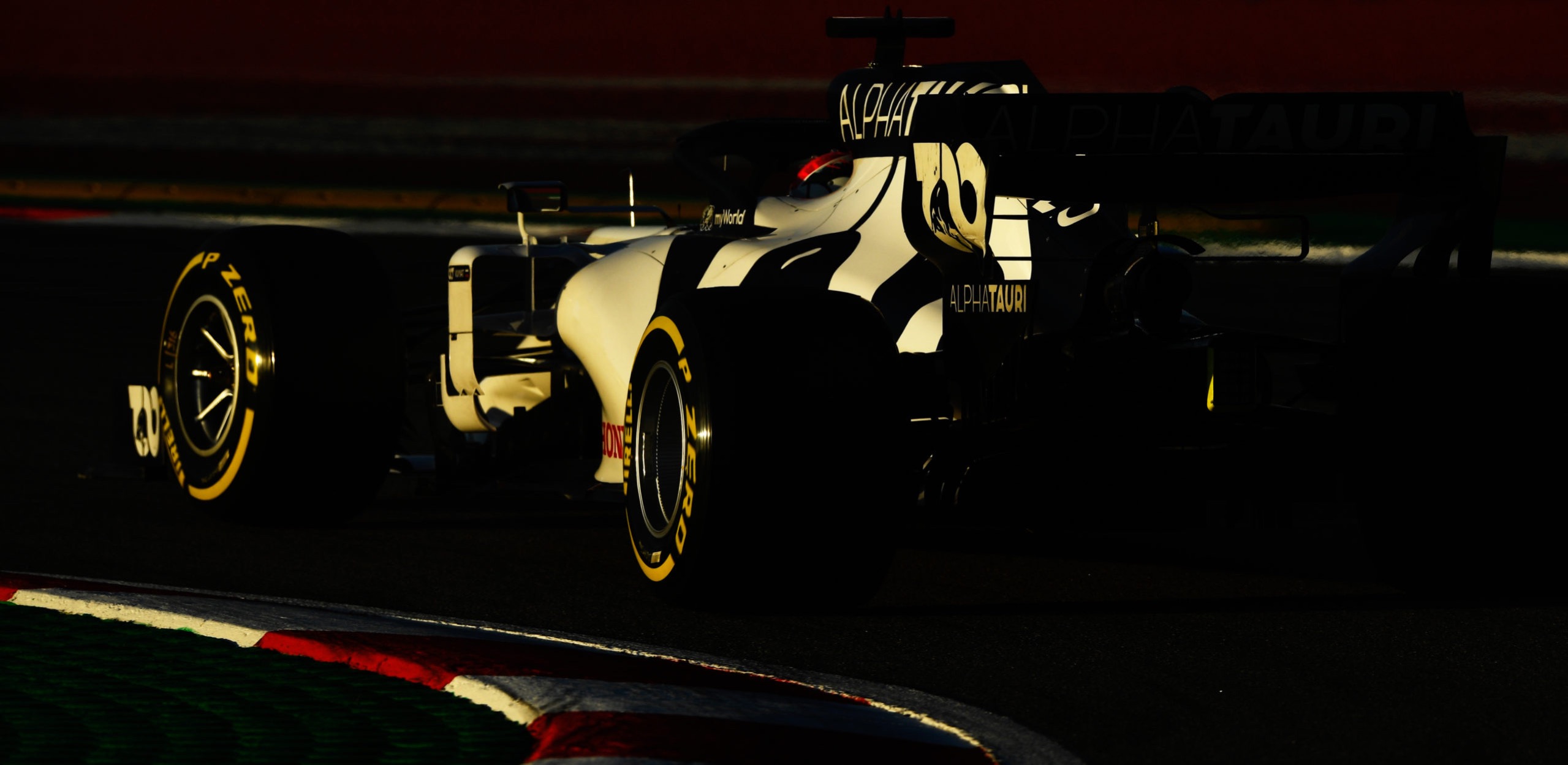
The US-based team suffered through 2019 with a defiantly unpredictable car. Thus, the squad looked to the first preseason test to clear their heads and get down to business with their revised VF20.
Unfortunately, it wasn’t to be. Both team drivers, Romain Grosjean and Kevin Magnussen, put the new VF20 into the barriers, with Magnussen’s faux pas (due to a puncture) on Friday forcing the team to miss the rest of the day’s running. Haas ended up completing just 316 laps, the fewest of all the teams.
They will need every second they can squeeze out during the second preseason test to have any hope of gather points in the first few Grands Prix.
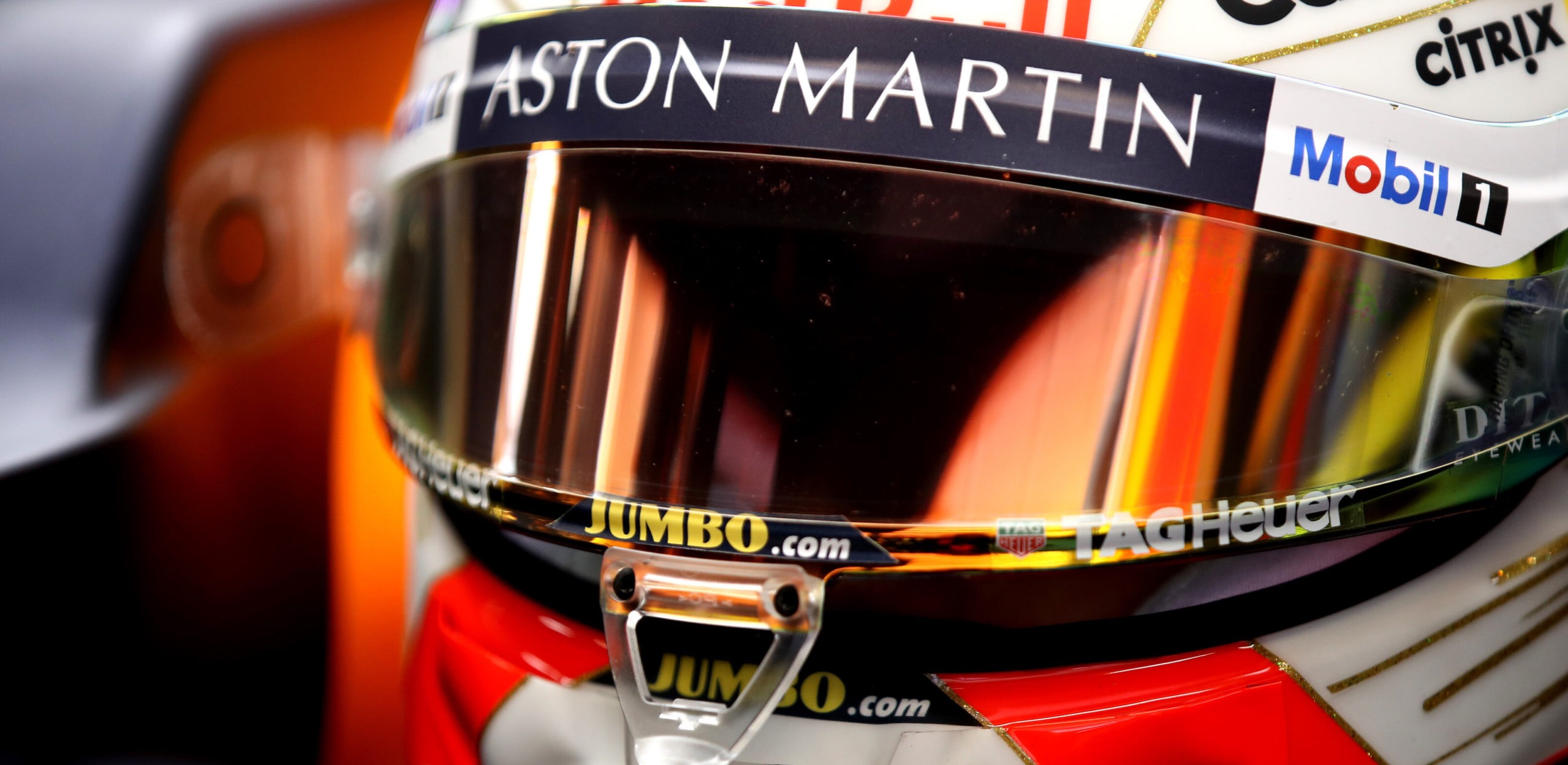
If Williams goes no faster in 2020 testing, they will have already bested their dismal 2019 form – their 323 test laps more than tripled the 88 they eked out in 2019.
Fortunately, Williams also exudes real optimism with a car that was the first onto the track. The FW43 is now faster, more reliable and more stable due to cohesive aerodynamic balance.
Williams’ rise is undoubtedly the “feel good” story for the 2020 F1 season that hints of plenty of surprises.
Teams should push the cars to the limit in second preseason testing, so failures are guaranteed as they find the limits of new parts. Still, you can expect them to surpass last season’s lap count as they try to learn their cars’ potential before they pack them off for the first practice session in Australia in two weeks.
